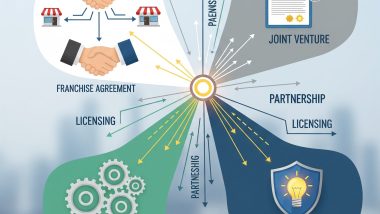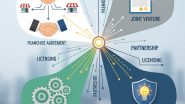When you’re running a small business, each and every penny saved is a penny earned.Many business owners feels that depreciation is too complicated or that they’ll have to pay a lot to the accountant to calculate depreciation. Well that’s a mistake which could cost you far more than any savings from your accounting procedures.What is Depreciation?
When you use an asset over a period of time, it often loses its value.Depreciation is the decrease in the value of an asset over time due to its wear and tear, new technology or market conditions. What can a small business depreciate?
Common assets that a company can depreciate include tangible assets like machinery, vehicles, furniture, buildings, etc. and intangible assets like patents, copyrights, and computer software.For example: If a company purchases a vehicle costing Rs.100,000 and the expected usage of the vehicle is 5 years, the business might calculate depreciation on the asset at Rs.20,000 each year for a period of 5 years. Depreciation is an income tax deduction. By decreasing the value of the asset, your overall taxable income lowers, and hence, your tax liability decreases.How to calculate depreciation in Small Business?
There is no single method to calculate depreciation. In fact, there are several methods of calculating depreciation.3 most common methods to calculate depreciation are as follows:
- Straight Line method
- Unit of production method
- Accelerated depreciation method
Step 1Calculate the initial cost of the asset purchased. The initial cost includes the cost of acquiring the asset plus additional expenses for making it operational, such as installation cost, shipping or taxes.Initial cost = Cost of asset + additional expenses (installation, shipping or taxes)Step 2Estimate the useful life of the asset i.e. the period of time over which the asset is expected to be used, after which it needs to be replaced. Step 3Estimate the residual or salvage value of the asset i.e. the amount that you expect to be received from the disposal of the asset after its useful life.1. Straight-line method
This is the simplest method of all. In the straight-line method, you choose to depreciate your asset at an equal amount for each year over its useful lifespan.Depreciation expense = (Asset cost ’ Residual value) / Useful life of the assetFor Example: Suppose Aggarwal Sweets purchases a machinery for Rs.200,000 having a useful life of 10 years and the residual value of the machinery is Rs.20,000.Annual Depreciation expense = (Rs.200,000 ’ Rs.20,000) / 10Annual Depreciation expense = Rs.18000Thus, Aggarwal Sweets can take Rs.8000 as depreciation expense every year over the next 10 years.
2. Unit of production method
This method is very useful in assembly for production lines. This is a 2-step process.Under this method of depreciation calculation, equal expense rates are assigned to each unit produced. Hence, depreciation calculation is based on the output capability of the asset rather than the number of years.2 steps are:Step 1: Calculate per unit depreciation:Per unit depreciation = (Cost of asset ’ Residual Value) / useful life in terms of units of productionStep 2: Calculate the depreciation of actual units produced: Total Depreciation = Per Unit Depreciation x Units ProducedFor example:Gupta Ji Ltd. purchases a printing press to print flyers for Rs.40,000 with a useful life of 1,80,000 units and a residual value of Rs.4000. It prints 4000 flyers.Step 1: Per unit Depreciation = (Rs.40,000 - Rs.4000) / 180,000 = Rs.0.2Step 2: Total Depreciation = Rs.0.2 x 4000 flyers = Rs.800Hence, the total depreciation expense, which is accounted, is Rs.800.3. Written down value method:Under this method, depreciation is calculated at a fixed percentage each year on the decreasing book value, known as Written Down Value of the asset (book value less depreciation).For example:Sharma & Sons purchased a machine for Rs.500,000 having a useful life of 10 years and its estimated residual value is Rs.40,000. Rate of depreciation = 10%Amount of depreciation = (Book Value ’ Rate of Depreciation) / 1001st year: Depreciation = Rs.500,000 x 10/100 = Rs.50,0002nd Year: Depreciation = Rs.450,000 x 10/100 = Rs.45,0003rd Year: Depreciation = Rs.4,05,000 x 10/100 = Rs.40,5004Th Year: Depreciation = Rs.3,64,500 x 10/100 = Rs.36,450Depreciation is an important part of bookkeeping and accounting which helps companies maintain their income statement and balance sheet properly with the right profits recorded.
















